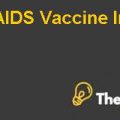
Executive Summary
In the year 2009, the people of Mexico observed a flu affecting a rising number of people and which was not identified beforehand and it even influenced the people living in Southwestern U.S. Such an event was witnessed after a period of forty years and even World Health Organization took notice of the flu, declaring it dangerous and severe. H1N1 flu is also known as swine flu. The case goes into deep analysis of how the case of swine flu was handled in Tennessee, how health professionals, federal and state, private and public, all joined hands in order to effectively counter the severe flu. The case basically deals with an emergency and shows how this emergency was dealt with; the case study is in reference with concepts like crisis management and health care policy and how health professionals distributed vaccines of H1N1 virus. The different problems which the government of public faced was related to communication and managing the increasing number of patients who required urgent care.
Statement of the problem
The main problems faced by the health officials of Tennessee were they were inefficient in setting up effective delivery system, to deliver vaccines. In addition, the government of Tennessee and the health officials faced problems in communicating with the public regarding swine flu and lastly dealing with the rising number of swine flu patients; how to adjust patients in existing available space and health care facilities.
Relevant background information -
a. Experiences with H1N1 in other states
In the year 2009, month of April, the initial signs of H1N1 were observed in Mexico and Southwestern United States. H1N1 cases were also found in the state of Texas and California, after which Tennessee alerted the State Health Operations Center. Texas was fighting with the virus since spring of the same year and from Texas, Tennessee developed the idea of a distribution model for antiviral medications. Apart from Tennessee, Texas and California, Knox County also saw signs of H1N1 when a student studying in West Valley Middle School shows signs of the virus and the superintendent who got to know about the student, closed the school. The superintendent also stated that children should stay home and must avoid any social gathering, in order to avoid being infected from H1N1.
b. Role of state and federal health organizations
CDC or Centre of Disease Control played a significant role in the prevention of H1N1. WHEN CDC got to know about the virus, the center issued guidelines for the public, in order to stay safe from the virus. The CDC also developed time table and schedules regarding when schools should be kept shut and most importantly, the medical institutions who were supposed to be on the top of the list in order to receive vaccinations for the virus. World Health Organization played the role of stating that the flu outbreak in Mexico, Tennessee, California and other states is a the world’s first flu pandemic which has been observed after forty years.
The State Health Operations Center is another organization, which served as a means of communication between the local health officials and health officials from the state. This was a very important purpose as the structure of the public health care system was hybrid in nature of the Tennessee state.
c. Public health issues
The main public health issue which was the outcome of the virus was that people suffered from flu and if they came in physical contact with someone else, then this created problems for the others too, as they were most likely to get affected. Students of middle school also came in contact with H1N1 disease and thus children had to be away from school for some days.
d. Distribution of the vaccine
Tennessee observed the way Texas distributed antiviral medicines and keeping the model in mind, Tennessee prepared a model through which the distribution of vaccines could be effectively implemented. Dr. Kelly more, who was the Medical Director of the Immunization Programs, working for Tennessee, derived the idea from the model, that the vaccines should be distributed through pharmacies, hospitals and other commercial zones, instead the health care sector directly selling to the public. Tennessee also lifted any restrictions in order to make the vaccine available for public. Kelly Moore suggested that in order to effectively distribute vaccines, there should be a pre-registered system, in which those distributors who are interested in distributing vaccines must register. This way, the health care sector would have contact information of distributors and making vaccines available for the general public would be a straightforward idea. The state also focused on designing the ordering process which consisted of initially interested distributors registering with the state, and then they were given a six character PIN through a software. After this, the distributors were supposed to place their orders by using an online form. The priority of distributors, who should be given the vaccine was decide by keeping in mind the facilities, as in hospitals have more facilities as compared to pharmacies. This prevented micromanaging and allowed the vaccine distributors to do what they wanted to.
This is just a sample partial case solution. Please place the order on the website to order your own originally done case solution.













